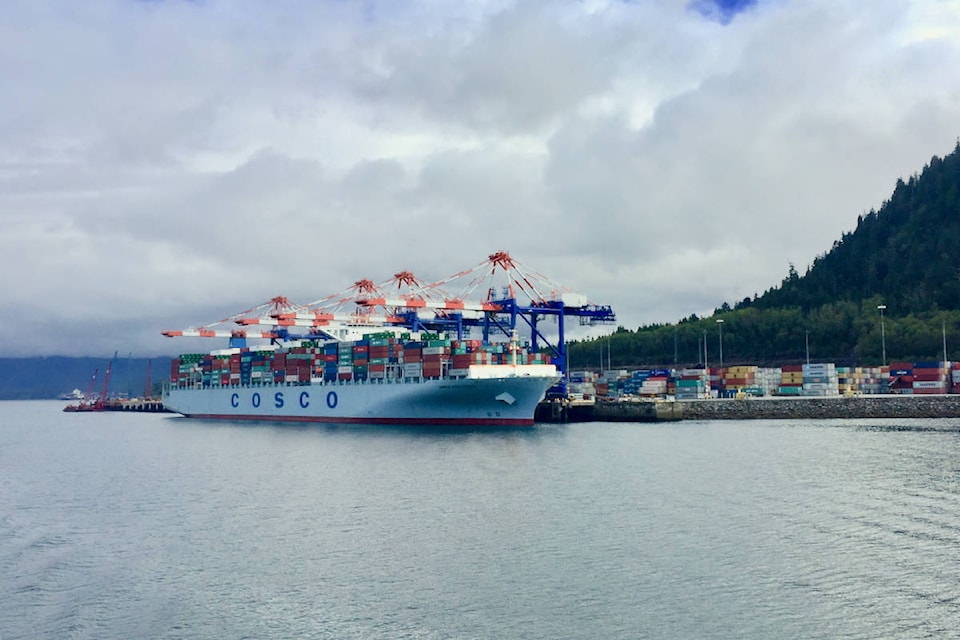As many as 5,400 new jobs are expected to be created through the Port of Prince Rupert in the next decade, states the 2016 economic impact study released this week.
In the study, commissioned by the Prince Rupert Port Authority, the job prediction was based on a forecasted capacity of 55 million tonnes of cargo in the next 10 years.
Approximately half of the 3,100 jobs created through the port in the last 10 years have been in Prince Rupert. Ken Veldman, the director of public affairs for the Port of Prince Rupert, said the port’s last several economic studies showed similar numbers, and it’s likely that trend will continue.
“The types of jobs are largely going to be in the same sort of areas as we’re seeing now,” Veldman said. “You’ve got to really think of it from a full supply chain perspective.”
Anticipated jobs would include those working directly at the terminals to marine operations to government positions.
“Everything from customs officers to grain inspection to Transport Canada regulators, the Coast Guard,” Veldman said.
READ MORE: PORT DELIVERS $1 BILLION INJECTION INTO NORTHERN B.C.
Average wage increases
From 2009 to 2016, the average wage in the supply chain increased from $61,000 to $83,000.
“Not only are we seeing a significant increase in numbers of employees over the last decade, but the actual average wage each one of those employees is making based on how productive this supply chain has become, that’s also starting to jump up, even beyond what CPI and inflation would be,” Veldman said. “We’re seeing more people making more money across the region.”
READ MORE: THE PORT OF PRINCE RUPERT WELCOMED THE BIGGEST CONTAINER SHIP TO DOCK IN CANADA
Creating economic stability
As the port looks forward to continued growth, it plans to diversify the business between terminals and lines of cargo, which Veldman said is critical to creating sustainability.
“It’s not just one commodity market that we’re looking at that may rise and sink as they go through time — as every market does — but the more we can get that diversification, the more stability we’re going to have over time as well. That’s a big, big goal for us as the port authority,” Veldman said.
In 2016, low volumes at the Ridley Island Terminal were offset by the AltaGas propane terminal project, which is the first of its kind on Canada’s West Coast.
READ MORE: ALTAGAS HIRES MOSTLY LOCAL FOR CONSTRUCTION OF ITS PROPANE TERMINAL
“It’s based on a market that’s separated from any other cargo we’re dealing with,” Veldman said of the AltaGas propane terminal. “And, quite frankly, you’re looking at a different kind of skill set as well in terms of the employees that would be working out there … and throughout the supply chain.”
But for the port to continue on its projected path, Veldman said employees at all levels will need to maintain their competitive work output. He also credits the workers with the success the port has seen so far.
“What this impact study is to us is the men and women who work in this supply chain in Northern B.C. and the gateway industry, if you will, have made their mark globally,” Veldman said. “They’ve proven how competitive they can be and we have great confidence that they can continue to be competitive. It’s a real validation at how good we’ve become at moving trade through this gateway.”
keili.bartlett@thenorthernview.com
Like us on Facebook and follow us on Twitter
